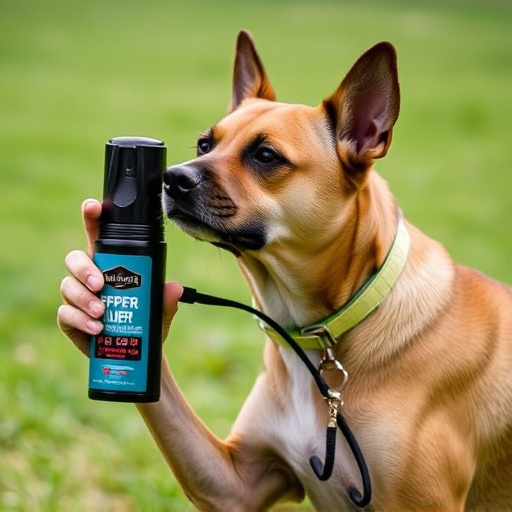Canine pepper spray, featuring capsaicin from chili peppers, offers a 3-4 meter protection range against aggressive dogs during outdoor activities. Its effectiveness and safety depend on understanding local laws, proper storage, training in application, and strategic deployment techniques outlined in the Canine Pepper Spray Deployment Distance Guide. Key factors when choosing include distance, capsaicin concentration, ease of use, and special features. Optimal deployment maintains a 6-9 meter safe distance, correct aiming, even distribution, facial targeting, and wind conditions consideration to maximize protection while minimizing cross-contamination and bystander harm.
Staying safe while outdoors is paramount, especially with the presence of dogs. This comprehensive guide explores canine repellent spray, a powerful tool for personal protection against dog attacks. We delve into the science behind ‘canine pepper spray,’ uncovering its benefits and safety measures. The article then navigates the process of selecting the ideal spray, considering key factors. Finally, it offers an in-depth look at deployment techniques, including optimal distance and impact maximization tips, making you a savvy user in our Canine Pepper Spray Deployment Distance Guide.
- Understanding Canine Repellent Spray: Benefits and Safety Measures
- How to Choose the Right Canine Pepper Spray: Factors to Consider
- Effective Deployment Techniques: Maximizing Protection Distance and Impact
Understanding Canine Repellent Spray: Benefits and Safety Measures
Canine repellent spray, often containing capsaicin, a compound found in chili peppers, is a powerful tool for personal protection against aggressive dogs. Unlike traditional pepper spray designed for human use, canine-specific formulations are tailored to be more effective on larger breeds and have a longer deployment distance—typically ranging from 3 to 4 meters (10-13 feet), according to the Canine Pepper Spray Deployment Distance Guide. This makes it ideal for outdoor activities like hiking or walking in areas known for dog populations.
While highly effective, safety measures must be observed when carrying and using canine repellent spray. It’s crucial to keep it out of reach of children and pets and store it in a cool, dry place. Users should also familiarize themselves with local laws regarding pepper spray possession and use, as regulations vary by region. Additionally, proper training in its application is essential to ensure effectiveness and minimize the risk of accidental injuries.
How to Choose the Right Canine Pepper Spray: Factors to Consider
When choosing a canine repellent spray, several key factors should guide your decision. First, consider the deployment distance recommended by the manufacturer. This is crucial for ensuring the spray reaches the intended target before the dog gets too close, as different sprays have varying range capabilities. A good canine pepper spray deployment distance guide will typically offer a range of 3 to 10 meters (10-33 feet), depending on factors like wind and atmospheric conditions.
Second, check the concentration of capsaicin or oleoresin capsicum (OC), the active ingredients in the spray. A higher concentration is generally more effective but also more intense. It’s important to balance the need for protection with the level of irritation the spray can cause. Additionally, consider the spray’s ease of use and reliability, as well as any special features like a quick-release trigger or a design that reduces wind impact, ensuring you’re prepared in various scenarios.
Effective Deployment Techniques: Maximizing Protection Distance and Impact
To maximize the effectiveness of canine pepper spray, understanding and employing strategic deployment techniques is key. The distance at which the spray is deployed plays a significant role in its impact. A Canine Pepper Spray Deployment Distance Guide suggests maintaining a safe distance, typically between 20 to 30 feet (6 to 9 meters), from the target animal to ensure optimal effect. This range allows for sufficient coverage while mitigating the risk of cross-contamination or excessive exposure to the spray.
Effective deployment also involves aiming correctly and ensuring even distribution of the spray. Direct inhalation by the targeted canine is ideal, but if that’s not feasible, aiming for the face and eyes can greatly enhance the impact. Additionally, factors like wind direction and speed should be considered to predict where the spray will land, ensuring maximum protection distance and minimizing any potential harm to bystanders or the environment.
Canine pepper spray, when used correctly, can provide an effective layer of protection against aggressive dogs. By understanding the benefits and safety measures, choosing the right product based on key factors, and mastering deployment techniques like optimal distance and aim, you’ll enhance your safety while walking or hiking in areas with potential canine encounters. This guide offers practical insights to ensure you’re prepared for any situation, making it a valuable resource for anyone seeking to protect themselves using canine pepper spray.
